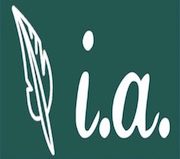I caught your article in the Kankakee Daily Journal titled “How to pay your bills without a paycheck” and found it rather timely. Not because I’m in that boat but because I was recently working a contract (IT consultant) with a batch of twenty-somethings and more than one asked some variation of “if you had it to do over again knowing what you know now what would you do?” It came up enough I eventually wrote a blog post about it so I could could just answer see this.
http://www.logikalsolutions.com/wordpress/?p=1511
What caught my attention in your article, while it discussed a great many ways to scrounge the money to save, it glossed over the “how to save it part.” The implication I received from the article was to park it in a bank account. For a twenty-something today that would be a bad thing.
- It is too easy to tap
- bank accounts have a very tiny snowball effect.
I don’t expect you to read the article, so let me boil it down for you.
The disaster fund account needs to be placed in the lowest fee brokerage account you can find. Preferably one which does not issue you either a checkbook or a debit card. It is also nice if you can set up your payroll to direct deposit a set amount out of each paycheck into that account. Find one which has a “share builder” type plan which allows you to purchase fractional shares. No, the account is not supposed to be used for stock market bingo or any “hot tips” you get. It is there to build a safety net. Most of the firms offering a “share builder” type plan require little initial investment per the Wall Street Journal.
How do you build the safety net? By purchasing dividend paying ETFs or stocks with a long track record of steady or increasing dividends. There are any number of sites which will sort/order dividend paying ETFs/stocks by the amounts they pay. A surprising number of these funds pay monthly dividends and can be purchased for around $10/share. Yes, initially, the dividend deposits will seem small, but, they grow as you purchase more. Once a person has enough shares to be seeing $100 or more per month in dividends they can move on to quarterly and annual (if there are any) funds which tend to pay higher amounts.
Rather than have a fixed emergency amount in some bank account with a nearly non-existent interest rate, the person ends up with a continually growing safety net. The goal is to accumulate enough of these funds to have an average monthly dividend amount of $1000. The only effort is initially setting up the brokerage account and getting the direct deposit arranged. After that, the first week of each month, log into the account and use whatever cash is there to purchase shares in one of the funds you researched before. Ideally one purchases shares of the fund having the lowest per share price that day.
There are many reputable sites to find the 5 and 10 year dividend histories of the funds. Yes, it is boring, but it is better than a liquid bank account. Without a checkbook or debit card you have to call the brokerage firm and request a check _after_ selling some shares of something. This stops a person from impulse purchases. Unlike a bank account, the share prices can actually go up over time, especially during a down market when people flock to safety, so you may get much more back than you put in.
Just my thoughts.

